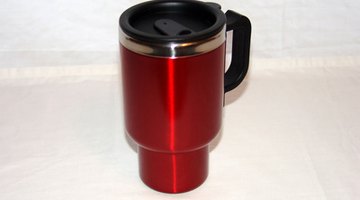The Best Materials for Insulated Cups
Many materials are currently used to insulate but when it comes to the Thermos or cup, keeping liquids warm is less important than keeping liquids safe from dangerous contamination.

In fact, several materials from plastics to metals are deemed safe for use in insulated cups, and some are safer and more effective than others.
Nothing at All
The principle behind insulated cups is to minimize the amount of heat that travels into or out of a liquid. Heat is transferred by conduction, so insulated cups use non-conductive materials to minimize heat transfer. The best non-conductor is nothing at all and because of this, the best insulated cups are insulated by a vacuum that surrounds the cup. The inside of the cup is usually coated in a reflective material and immediately outside is a small vacuum. This deprives the inner cup of anything to touch except where the cup is fastened to an outer cup that traps the vacuum.
Polystyrene
Polystyrene insulation, including Styrofoam, is used to insulate houses and boats but is most commonly seen in molded forms such as a cooler or cup. This substance is a molded plastic that can be produced as boards, but is more often compressed into small spheres which are then molded into cups. The plastic is not conductive and the sphere shapes "confuse" the direction of heat as it tries to escape. Polystyrene is used in both a disposable format or in more permanent form as a liner for many plastic covered thermal cups.
Double Walled Paper
Another common beverage insulation is the double-walled paper insulated cup. Although these cups are most often disposable, the double-walled technology keeps liquids up to 25 degrees warmer or cooler than the outside temperature. This is because the cellulose in paper resists the heat and heat energy that escapes the first layer is trapped again in the second. Double-walled paper cups are also more environmentally friendly than their polystyrene counterparts, since paper is more readily biodegradable than plastics which can last for thousands of years.
The Drip Cap
- Many materials are currently used to insulate but when it comes to the Thermos or cup, keeping liquids warm is less important than keeping liquids safe from dangerous contamination.
- Polystyrene insulation, including Styrofoam, is used to insulate houses and boats but is most commonly seen in molded forms such as a cooler or cup.
- The plastic is not conductive and the sphere shapes "confuse" the direction of heat as it tries to escape.
References
Writer Bio
Sean Russell has been writing since 1999 and has contributed to several magazines, including "Spin" and "Art Nouveau." When not writing, Sean helps maintain community gardens in Silver Lake and Echo Park, California. Russell also worked extensively on the restoration and rejuvenation of public parks in Florida, Louisiana and Mississippi after damage from 2004-2005 hurricanes.
Photo Credits
- thermos cup image by Tijara Images from Fotolia.com
- thermos cup image by Tijara Images from Fotolia.com
More Articles



